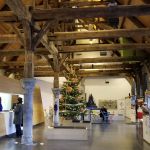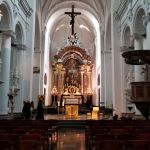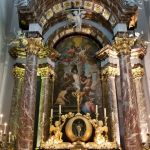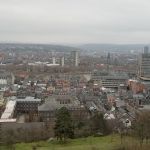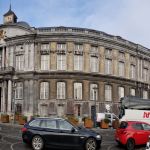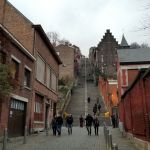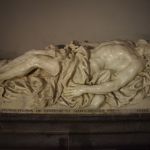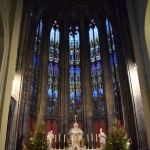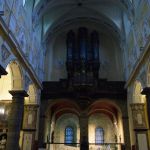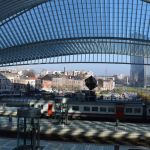A quaint city with lots of churches, Liège is a nice town in which to take a stroll.
A special thank you to Visitez Liège for their detailed pamphlets.
Historic DistrictCity Center
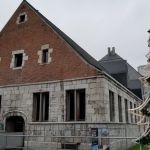
Today's Tourism Office is located in the old butcher hall. This quaint barn-looking building was built in the mid-16th century and was used by the Butcher Corporation.
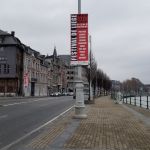
Located on the Quay Street, right next to the Tourism Office, the building to the left with the protruding upper floors is one of the oldest remaining buildings of the city. Built in the 16th century, it underwent some renovations in the 17th century.
More importantly though, if you are a fan of farmers markets, be sure to come back to this Quay Street as it is closed to cars every Sunday to make way for the Sunday Market that stretches all along this street. Some call it the largest market in Belgium.
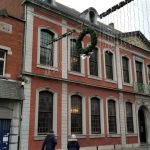
Built in 1738, this building came to be known as the Hotel Ansembourg in reference to the family that occupied the residence over 60 years. Today, it is the Ansembourg Museum, showcasing regional furniture pieces during the Enlightenment.
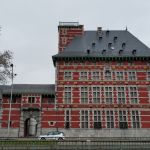
On the same block on the side of the quay is the Grand Curtius Museum. Named after Jean Curtius for whom the house was built in the 17th century, the museum features various artifacts that are important to Liège's identity, such as weaponry, glassware and decorative arts.
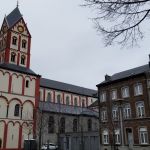
Just behind the Grand Curtius Museum stands the Saint-Bartholomew Collegiate Church. The Church was built in the 11th century in the Romanesque style.
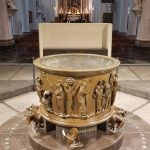
Under the organ is located one of the seven wonders of Belgium : the Baptismal Font. Sculpted in high relief, the Baptismal Font depicts five different scenes around the theme of baptism. The font was originally supported by 12 oxen to represent the 12 apostles. Today, only 10 oxen remain.
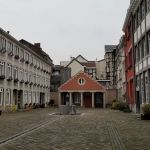
Lined with buildings from the 17th and 18th century, the Saint Antoine Courtyard features an interesting piece of art in the middle.
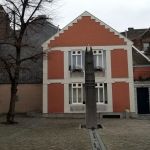
In 1982, the two artists Anne and Patrick Poirier drew inspiration from the Mayans when they created this tunnel of water linking the pyramid from one side of the yard to the small obelisk on the other side.
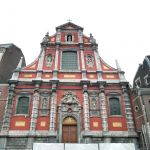
This baroque church of the 17th century features a facade with four statues. On the left side of the Our Lady of the Immaculate Conception facade stand Saint Hubert below and Saint Lambert above. On the right side of the facade stand Saint Roch below and Saint Alphonsus above.
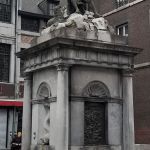
Across from the church is the Saint Jean-Baptiste fountain. Originally built during the medieval era, the fountain simply had a rock placed on top. In the late 17th century, Jean Del Cour was commissioned to create a statue depicting Saint John the Baptist to replace the rock.
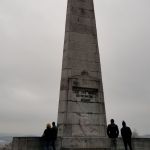
Once up the steps, you will also see the Monument of the 14th Line. It is dedicated to all those lost during the First and Second World Wars.
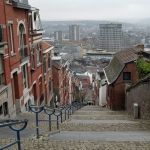
Built in the 19th century, these stairs served to connect the military barracks at the bottom to the citadels at the top of the hill.
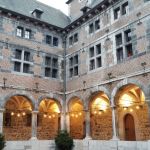
Further towards the center of town is the Museum of Walloon Life, which was originally a monastery of the Franciscans built in the 17th century.
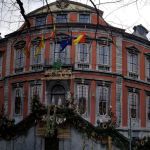
After being bombarded by the French army in 1691, the city's town hall was rebuilt in 1714. Similar in style to the Our Lady of the Immaculate Conception church, both buildings feature the coat of arms of Prince-bishop Joseph-Clement of Bavaria.
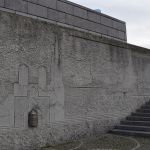
Since the 8th century, there had always been some type of religious building on the main square. When one would be destroyed, it would soon after be rebuilt. That is, until the late 18th when a group of revolutionaries voted to destroy the cathedral. Today, there is no cathedral but if you look closely, you will still be able to see the blueprint of the cathedral subtly marked by pavement and pillars.
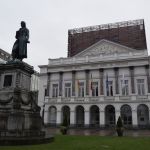
Built between 1818 and 1820, the Royal Theater replaced a former Dominican convent and reused the columns of the Carthusian monks' former church. Later, in 1930, the pediment was added depicting Apollo, Athena and Aphrodite.
Located in front of the Royal Theater, the statue of Grétry was created in 1842 by Guillaume Geefs. André Grétry was a well-known composer who played for the French king and even knew the likes of Rousseau and Voltaire. After his death, Grétry's body was buried in Paris but his heart remains at the base of this statue.
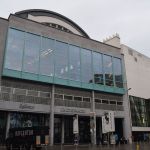
With the Royal Theater, the Cité Miroir (left) and the Sauvenière Cinema (right) make up the cultural center of Liège. Once the Sauvenière baths, the Cité Miroir organizes events aimed at promoting education and culture. The Sauvenière Cinema next door is one of the most modern movie theaters in Belgium. Built in 2008, the Cinema has won several awards praising its architecture.
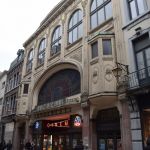
This Art deco building was transformed into the Cinema Churchill in 1947. The main elements of Art deco present in this building are the large stained-glass window and the ironwork surrounding it.
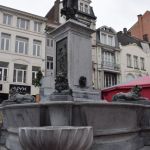
Originally designed and built in marble by Jean Del Cour in 1696, the Fountain of the Virgin Mary was designed for the cathedral on the main square. After the cathedral was demolished, the statue was rebuilt in granite by Julien-Etienne Rémont in 1854 and was placed on this square. Today, it is more commonly referred to as the Fountain of the Lions.
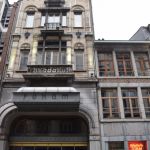
Nearby is the Forum concert hall built in 1922. The curved stone workings and the ironwork also identify it as an Art deco building.
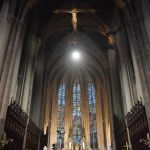
Founded in the 10th century, St. Paul's Cathedral was rebuilt in the 13th, 15th and 18th century. In the 19th century, it became the city's cathedral as the one on the main market square was voted to be demolished.
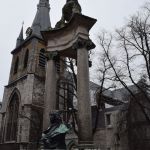
On St. Paul's Square stands a bust of baroque sculptor Jean Del Cour, created by Paul Du Bois in 1911. After studying in Rome, Del Cour returned to Liège, where he was commissioned to make many pieces that still adorn the city. The story goes that Del Cour was even contacted by Vauban to create a statue of Louis XIV but Del Cour refused due to his old age.
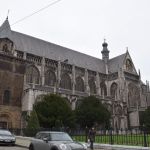
The Benedictine abbey of St Jacques was founded in 1015 and was rebuilt several times between the 12th and 16th centuries.
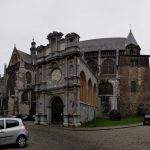
It is for this reason that the church is somewhat of a Frankenstein. The last addition to the church was the Renaissance doorway, which was built in 1558. The remains of the original Romanesque church are still visible in the crypt.
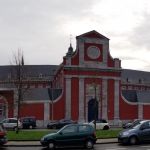
Initially built as a hospice in 1701, Vertbois has since 1983 house the Social and Economic Council of the Walloon Region.
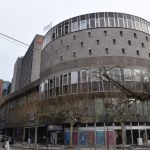
Built in the last 50 years, the Chiroux Rotunda is an example of how modern architects attempted to modernize the city. The Rotunda is reminiscent of a medieval tower and currently houses the region's largest library.
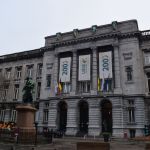
The University of Liège was founded in 1817 by the Dutch King Willem I. As the main building of the University, the statues atop the building's facade pay homage to the various disciplines that are taught at the University: philosophy, law, math and science. The two statues in the niches represent the arts and studying.
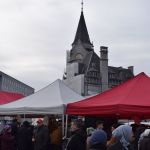
If you look behind the tents of the Sunday Market on the quay, you will see the tower of the central post office, completed in 1901.
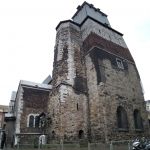
Originally built in 987, the Collegiate Church Saint Denis was struck by lightning and destroyed about 15 years later. Rebuilt several times and in parts, the Church is a mixture of different styles.
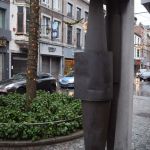
This monument in the form of an organ pipe honors the life of renown organist Cesar Franck. Born in Liège in 1822, Franck's talent was discovered at a young age, prompting him to go to Paris to further hone his talent. He became a well-respected composer and organist and was appointed as a professor at the Paris Music Academy in 1872.
